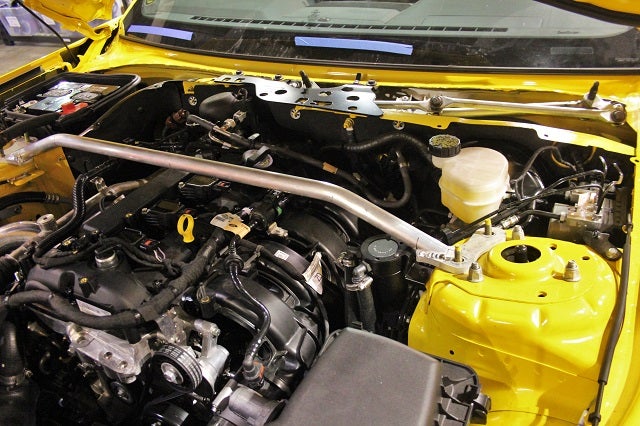
Stiffen Your 'Stang! 2015 Mustang Strut Tower Brace R&D, Part 4: Testing Rig Fabrication Continued
Last time we wrapped up our first attempt at creating an accurate gauge for measuring strut tower flex. Our initial tests showed some inconsistencies, which have been attributed to the method by which we mounted our gauge.
These inconsistencies occurred most likely because of the difference in materials. Our strut bar is steel, whereas the gauge assembly is aluminum. Welding these materials together is not possible, so we used alternate methods.
We need to eliminate any adverse variables for this test. Measurements of movement are small, so even a seemingly insignificant issue could cause skewed data. We decided to work up a full aluminum prototype modeled after our first design.
All-Aluminum Strut Bar Testing Prototype
In addition to new machining tools, we have a new high-pressure Waterjet cutter here at Mishimoto. We decided to flex its muscles a bit and use it to cut out our strut bar brackets. These were then welded to the bar itself once we positioned them properly.
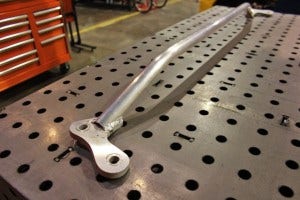
2015 Mustang strut tower brace aluminum prototype
Check out a shot of this bar installed.
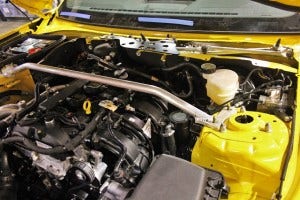
2015 Mustang strut tower brace aluminum prototype
We then cut the bar and spliced our pressure gauge into place.
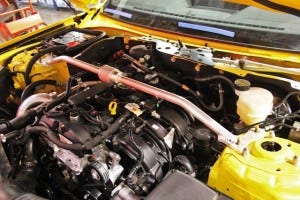
2015 Mustang strut tower brace testing prototype
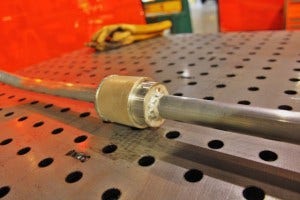
Testing rig for 2015 Mustang parts
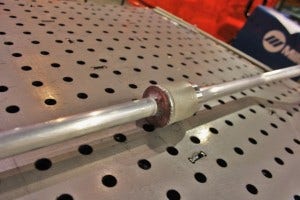
Testing rig for 2015 Mustang parts
Testing Results
Our first round of testing showed us some interesting data. Our tests included flex that was measured under braking and also flex during cornering. Our braking tests included an aggressive stop from 50 mph. The cornering test involved a 30 mph slalom run.
Our pressure gauge was set up to measure tension placed on the bar when the towers flex inward toward each other. This tension occurs predominantly during hard braking.
Unfortunately, our gauge did not accurately measure separation forces between the two towers or the strut reaction force. These forces occur during hard corning when the vehicle is quickly changing direction and also during acceleration.
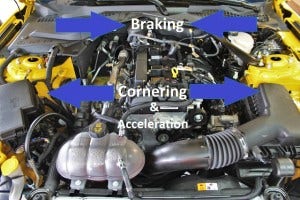
2015 Mustang parts development
So this setup provided half the results we were interested in seeing. Obtaining the second set of data would require a second pressure gauge facing the opposite direction.
Instead of doing this, we decided to explore a different type of gauge that would provide a bit more flexibility, allowing its use on future projects.
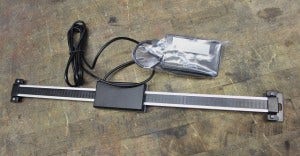
Linear displacement gauge for 2015 Mustang parts
Enter the linear displacement gauge! This gauge has a digital readout that measures movement. We will be using this device to measure movement of the strut towers in both directions.
Coming up - Final Testing Rig and Results
I promise, we need to complete only one iteration of this testing rig! Once finished, we will be conducting some interesting tests. The planned variations include:
- No bracing
- Stock K-brace
- Mishimoto Strut Brace
- Stock K-brace together with the Mishimoto Strut Brace
Thanks for reading!
-John




